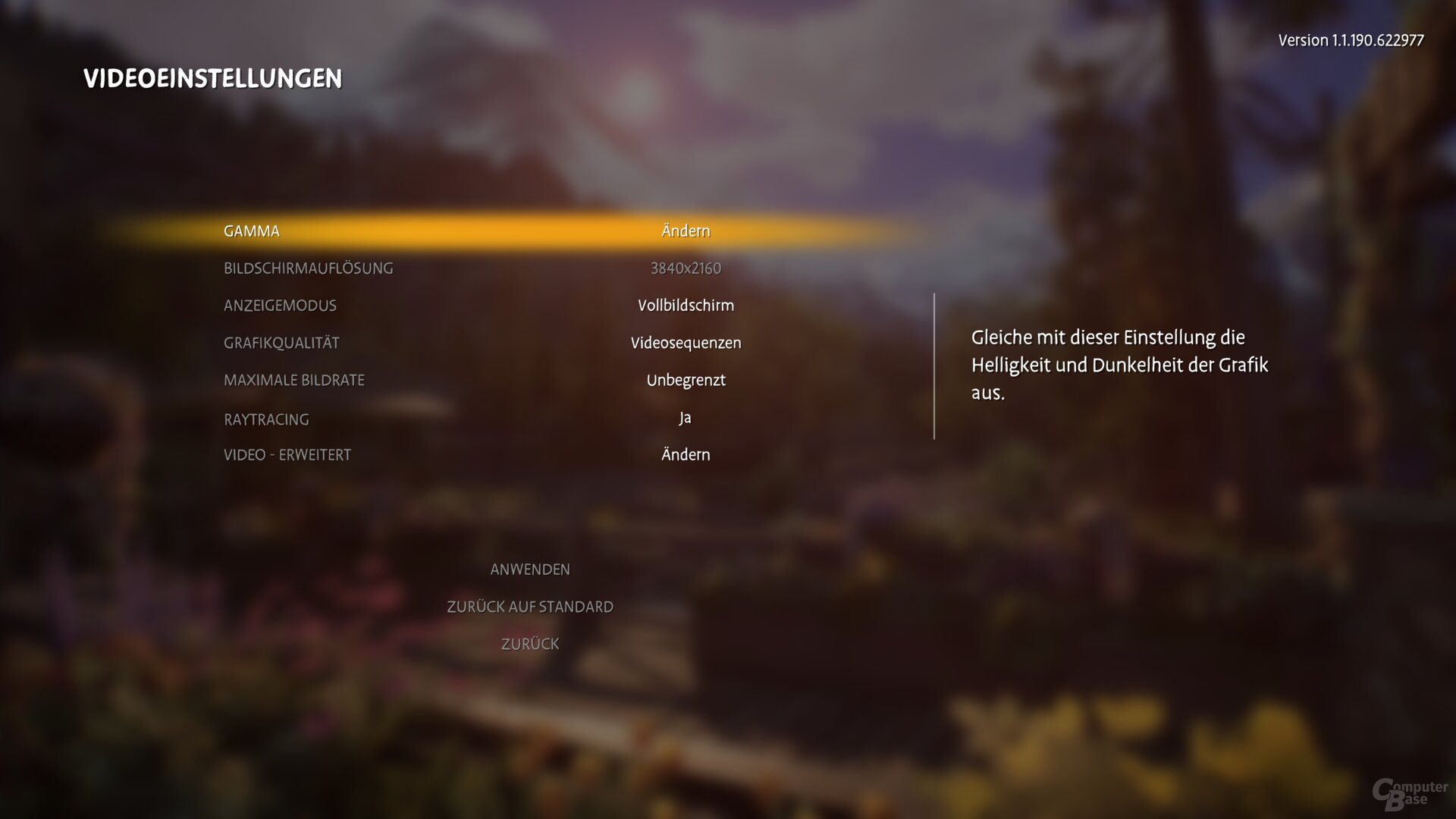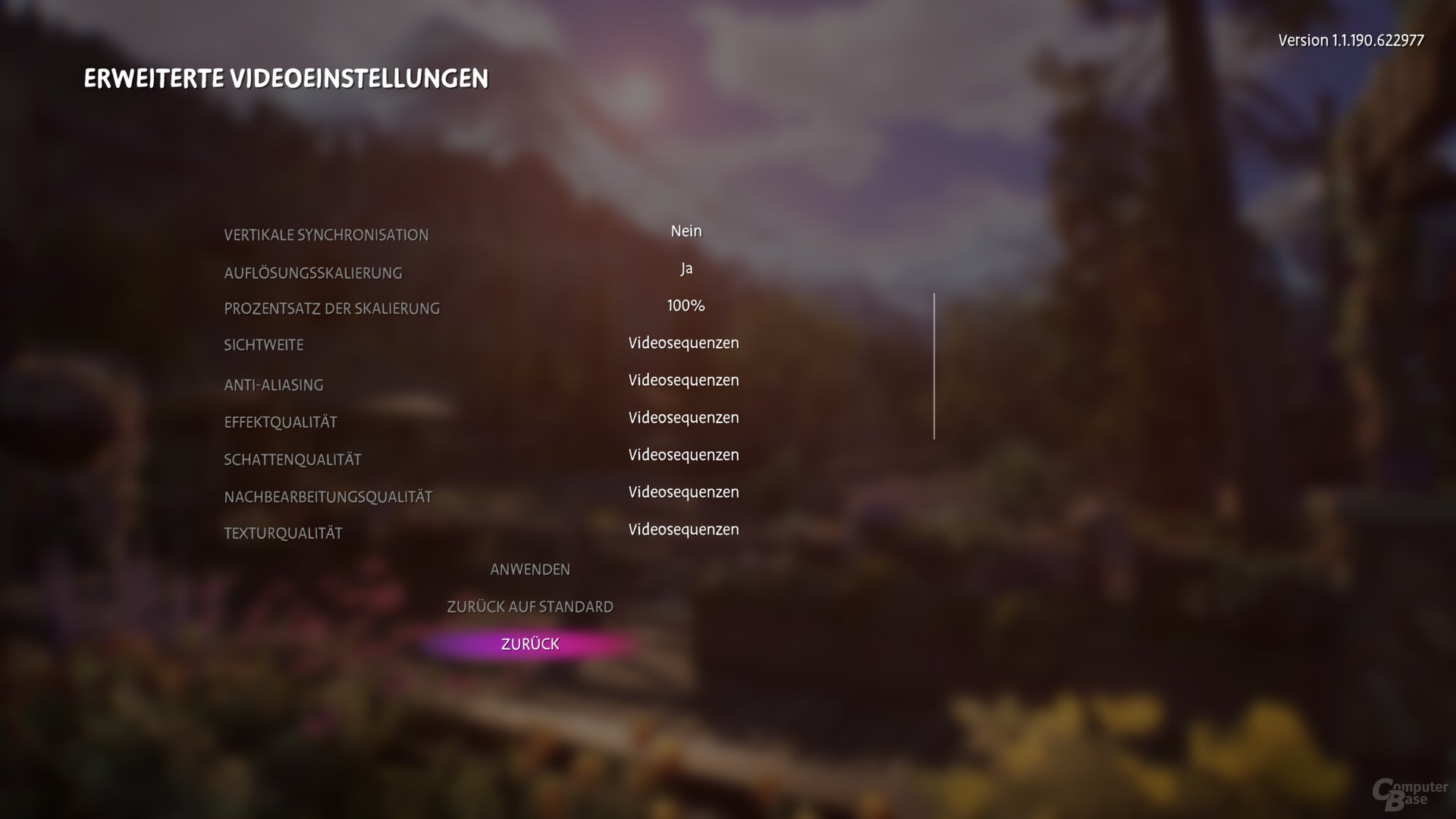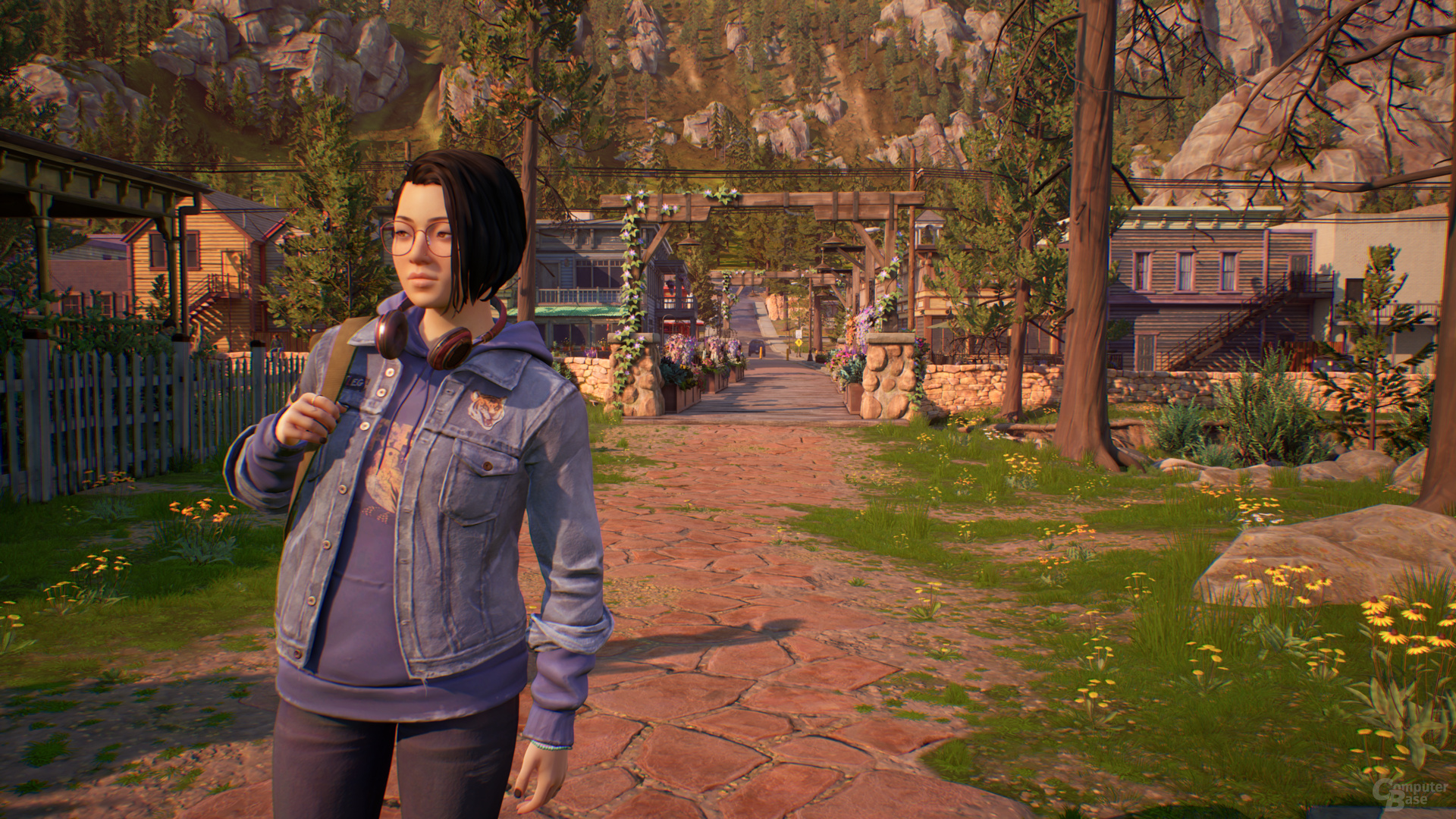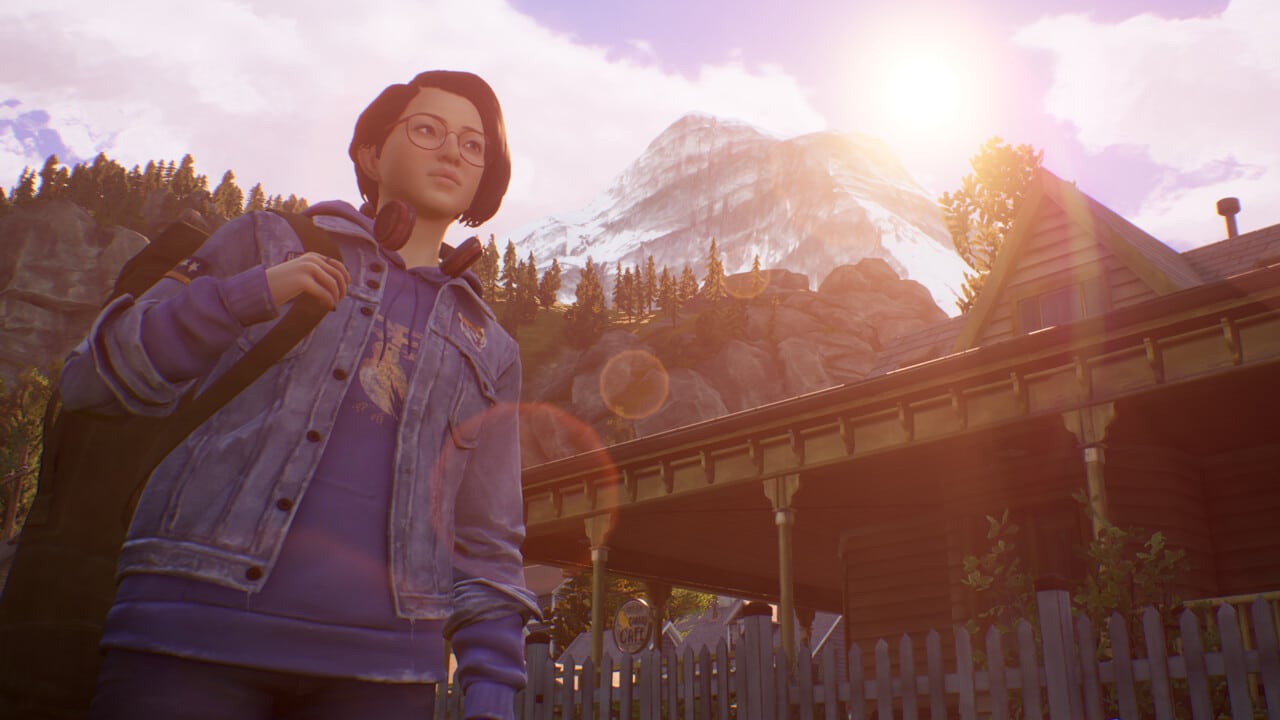Life is Strange: True Colors im Technik-Test
: Test |CUP | Specs |Config
Life is Strange: True Colors, the third part of the Adventure series, is convincing in terms of content across the board and is also improving in terms of technology. This is not only due to the integration of DirectX 12 – and certainly not due to ray tracing in the test, as the detailed analyzes and benchmarks show.
Update 09/10/2021 11:01 a.m.
With Life is Strange: True Colors, the well-known adventure series breaks new ground, but remains completely true to the actual core of the series: Despite all the changes, the third edition is primarily a detailed story including complex characters that are influenced by decisions can be, while the actual gameplay only plays a subordinate role. The fact that the course of the game in True Colors is no longer completely linear for the first time does not change that.
Life is Strange: True Colors is clearly growing graphically
Graphically, Life is Strange: True Colors also makes a big step forward, compared to Life is Strange 2, the look is hardly recognizable. That said, Square Enix and the Deck Nine development team stay true to their roots on this point as well. The style of the game is still the same as the original, despite all the improvements.
The style not only fits the game, it also helps to disguise the fact that True Colors is not developed by a large AAA team, but that it is a rather small production and you can see that on every nook and cranny: Who is who Looking at the graphics in detail, you will find weaknesses almost everywhere – from the animations to the textures.
But that doesn’t really matter, because Deck Nine manages to easily compensate for the weaknesses with lots of lovingly designed details, good camera work, appealing art design and effective lighting, so that Life is Strange: True Colors looks really chic and idyllic in places . In particular, the numerous cutscenes are staged great, the freely playable sequences in the outside world, on the other hand, are the biggest weak point.
It is worth mentioning that in many scenes the game tries to focus on a desired spot with the help of massive blurring at the edge of the image. This is hardly noticeable when actually playing. If, on the other hand, you are explicitly looking for the effect or looking at screenshots, you will quickly notice the effect. If you are bothered by it while playing, you can switch off the feature by setting the graphics option “Post-processing quality” to the “Medium” level.
Unreal Engine 4 with DirectX 12 (and ray tracing)
Life is Strange: True Colors, like the second part of the series, relies on the Unreal Engine 4. However, there has been a change in the APIs, because in addition to DirectX 11, the game also supports DirectX 12. The developers recommend using DirectX 11. Only those who want to use ray tracing should use the low-level API – another first for the game series.
Ray tracing shadows did not work in the test
Life is Strange: True Colors uses ray tracing for the shadows, these can be switched on or off in the graphics menu. The switch is also available in the trial version of the game, but it had no function. There are neither visible differences in the quality of the shadows nor a change in performance. Conclusion: Ray tracing does not work in the test version.
According to publisher Square Enix, ray tracing should work and other magazines have also confirmed this. Ray tracing did not run on two different editorial computers. Ray tracing tests are made up as soon as the problem has been resolved in the editorial office (or at least in the game).
Life is Strange: True Colors does not offer an overly complex graphics menu on the PC, but there are a few comfort options. In addition to the classic graphic presets and the individual graphic options, there is, for example, an FPS limiter in the menu, which however only allows 30 or 60 FPS and no higher values as long as it is not switched off completely. In addition, there is in-game upscaling, with 70 percent of the set pixels representing the minimum value, which can be increased in 5 percent steps up to 100 percent. There is just as little downsampling as there are comfort options.
The extent to which the individual options affect the graphic is not apparent at first glance. There is only a simple description of the options, sample screenshots are missing.
The LiS graphics menu: True Colors
image 1 from 2


Graphic presets with small to large effects
Life is Strange: True Colors comes with five different graphic presets. “Low”, “Medium”, “High”, “Very High” and “Video Sequences” are available, with the latter also representing the maximum possible quality. Why the developers opted for such a strange naming for the highest option can only be speculated. In any case, the mode definitely has no influence on the video sequences.
In general, the graphic differences between “video sequences” and “very high” are not particularly great. Primarily, the rendering distance is reduced for some objects, so that at some point hardly any details are displayed when the visibility is greater. This also happens with maximum graphics in the “Video sequences” preset, just a few meters further away. In addition, the grass density is generally somewhat reduced, no further differences can be seen. As a result, in many game scenes there is no difference at all between the two options. If you switch back to the second highest level for performance reasons, you don’t have to worry about the quality.

Videosequenz-Preset
image 1 of 5
With the high preset, on the other hand, significantly more quality is lost, since visibility and detail density are further restricted. In addition, the image is somewhat blurred, which is related to a reduced quality of the anti-aliasing. This actually does a really good job in True Colors. The image stability is very good even in low resolutions, but the image sharpness suffers in Full HD. This gets better from WQHD and the picture is sharp in Ultra HD. With the high preset, however, high resolutions are also blurred and the image stability also suffers. In addition, the LOD works more aggressively, so objects keep popping up out of nowhere.
The game still looks decent up to “high”, but from the medium preset onwards, True Colors clearly loses its graphic quality. With this preset, the image brightness also drops significantly, while the lighting itself still seems to be the same. In addition, the visibility and object density are reduced again and the image flickers strongly. The middle preset should only be used if otherwise no playable result can be achieved.
Graphic presets can change the number of pixels
Also worth mentioning for the presets is the option “resolution scaling”. If it is activated, the resolution is also gradually reduced from the “High” preset. If, on the other hand, the resolution scaling is deactivated, the presets do not change the number of pixels. The resolution scaling is switched off for the screenshots and benchmarks.
Big leaps in performance are possible
If you have performance problems in Life is Strange: True Colors, you can still get some performance out with the help of the graphics presets. Even the still pretty very high preset accelerates the Radeon RX 6800 XT by a respectable 43 percent, while the GeForce RTX 3080 delivers 47 percent more FPS. With a fast, up-to-date graphics card, more than 60 FPS in Ultra HD are no longer a problem.
The high preset makes another big jump and accelerates the Radeon by another 45 percent, while the GeForce by only around 22 percent. With the optically significantly poorer middle preset, there is another plus of 38 percent and 44 percent, respectively.
Graphics presets compared – 3,840 × 2,160
Gering-Preset
Medium preset
High preset
Very high preset
Videosequenz-Preset
Gering-Preset
Medium preset
High preset
Very high preset
Videosequenz-Preset
On the next page: Benchmarks in Full HD, WQHD and Ultra HD, frame times and DX11 vs. DX12















